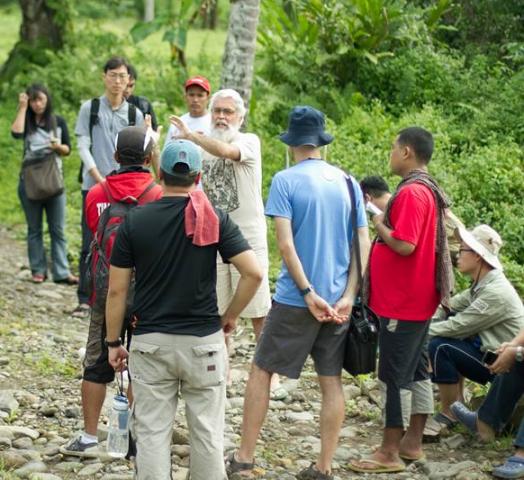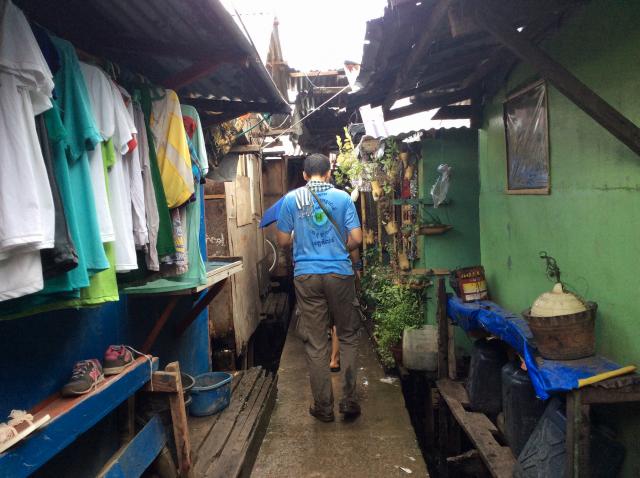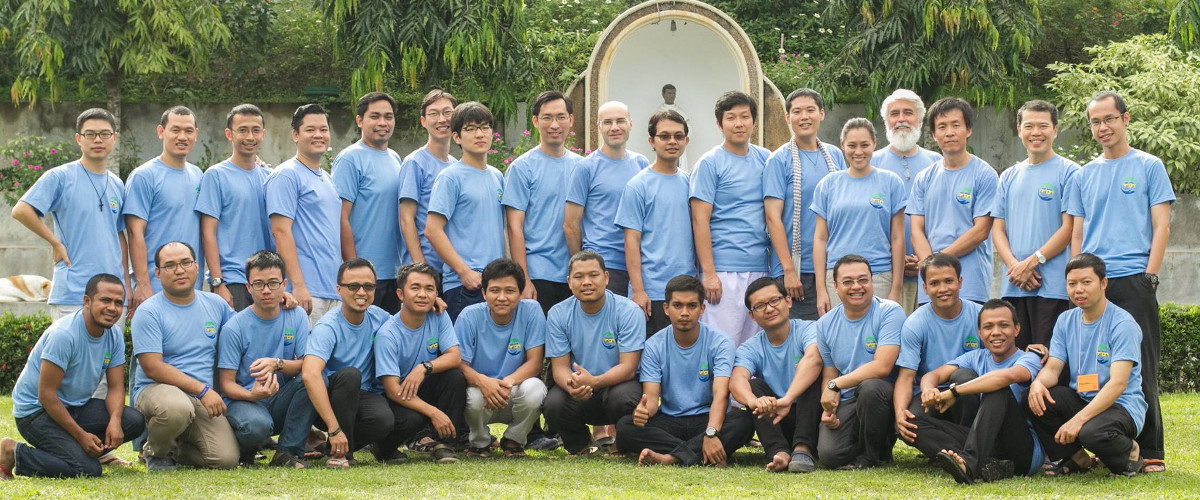A more perfect learning environment would have been hard to find for the recent Scholastics and Brothers Circle meeting. With Disaster Risk Reduction and Management for a theme, Tacloban – one of the areas hardest hit by Super Typhoon Haiyan (Yolanda in the Philippines) in November 2013 – was the logical location. During their workshop from December 18 and 30, the 25 Jesuit scholastics from across the Asia Pacific Conference were able to see with their own eyes the situation in Tacloban two years after the disaster. They visited reconstructed sites, and met with local communities and authorities in Tacloban City. What they saw guided their reflections as they each developed a plan for disaster and risk reduction management (DRRM) within the context of their provinces and regions.
“Our goal was, first of all, to help participants understand the role that Jesuits and Jesuit institutions play in disaster management,” said Pipat Muepae SJ, the scholastic who is Coordinator for the Scholastics and Brothers Circle. “Second was to learn to engage in the broader Disaster Risk and Reduction process and to collaborate with other institutions as well as clarify our roles in both humanitarian and development work. Finally, we wanted to provide an on-the-ground experience for SBC members to learn from the disaster experience of local communities and from the recovery process that is underway.”
 Guided by the staff and volunteers of Environmental Science for Social Change, a Jesuit research institute based in the Philippines, the participants learned about JCAP’s DRRM protocol. JCAP Coordinator for Reconciliation with Creation Fr Pedro Walpole SJ also helped participants understand Laudato si’, Pope Francis’ encyclical on the environment, and the Conference’s environmental way of proceeding. Several people who had accompanied Haiyan survivors also shared their stories.
Guided by the staff and volunteers of Environmental Science for Social Change, a Jesuit research institute based in the Philippines, the participants learned about JCAP’s DRRM protocol. JCAP Coordinator for Reconciliation with Creation Fr Pedro Walpole SJ also helped participants understand Laudato si’, Pope Francis’ encyclical on the environment, and the Conference’s environmental way of proceeding. Several people who had accompanied Haiyan survivors also shared their stories.
All this prepared the participants for the second phase of their workshop – immersion with people in various barangays (communities) in Tacloban City.
During the immersion experience, the participants found that the memory of Haiyan and the grief for its victims are still fresh. However, things are slowing returning to normal. They saw that infrastructures had been restored, and many of the businesses have re-opened, giving the local economy a chance to restart.
However, housing is a complex challenge.
“Many houses had been rebuilt by residents using what remained from previous houses. These abodes looked extremely fragile and inadequate,” said Sch Mauro Bossi SJ, one of the participants.

Authorities have erected new houses made of wood and palm leaves in resettlement areas. Meanwhile, other resettlement zones are being constructed in the inland, at the edge of the city, for people currently living near coastal, “no-build” zones. This is encountering strong opposition, as many of the people for whom these are intended are fisherfolk who earn their living from the sea. They would rather be resettled along the coast, and the scholastics saw that informal settlers had rebuilt homes in the “no-build zones”.
Yet the scholastics saw that the people had not lost their enterprising spirit despite the challenges. They spotted several cooperatives emerging and many small family-run businesses resuming.
They also saw that the people of Tacloban still have their faith.
“I was particularly struck by one of the stories from the people in Magay, Tanauan,” said Sch Paul Tu Ja SJ of Myanmar. “The first thing they requested to do in the village after the super typhoon was to build the chapel so that they could draw strength from spirituality and unity. I was so moved by their faith, the same faith that keeps them alive despite of disaster and hardship—the faith that is the source of their optimism and gratitude in life.”
After the 2015 SBC Workshop, the participants feel they have a newfound appreciation of the importance of DRRM and some have also committed themselves to being more mindful of the environment in their daily life. Sch Tu Ja, for example, plans to begin with simple acts such as segregating waste and making compost, and being mindful of water and energy usage.
Watch this video of the SBC engagement in DRRM in Tacloban:
Related stories:
Inspired by the experience of Tacloban


